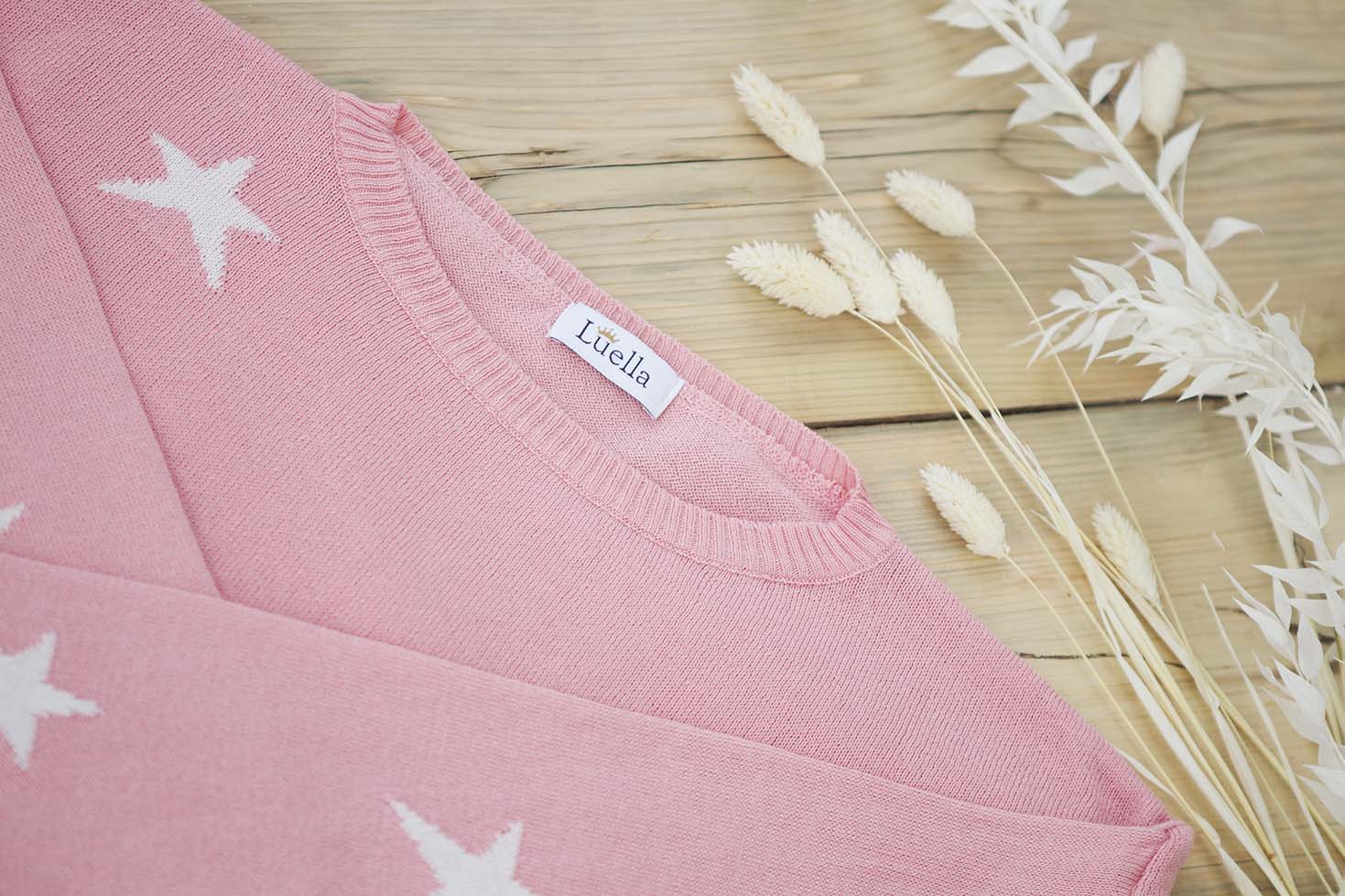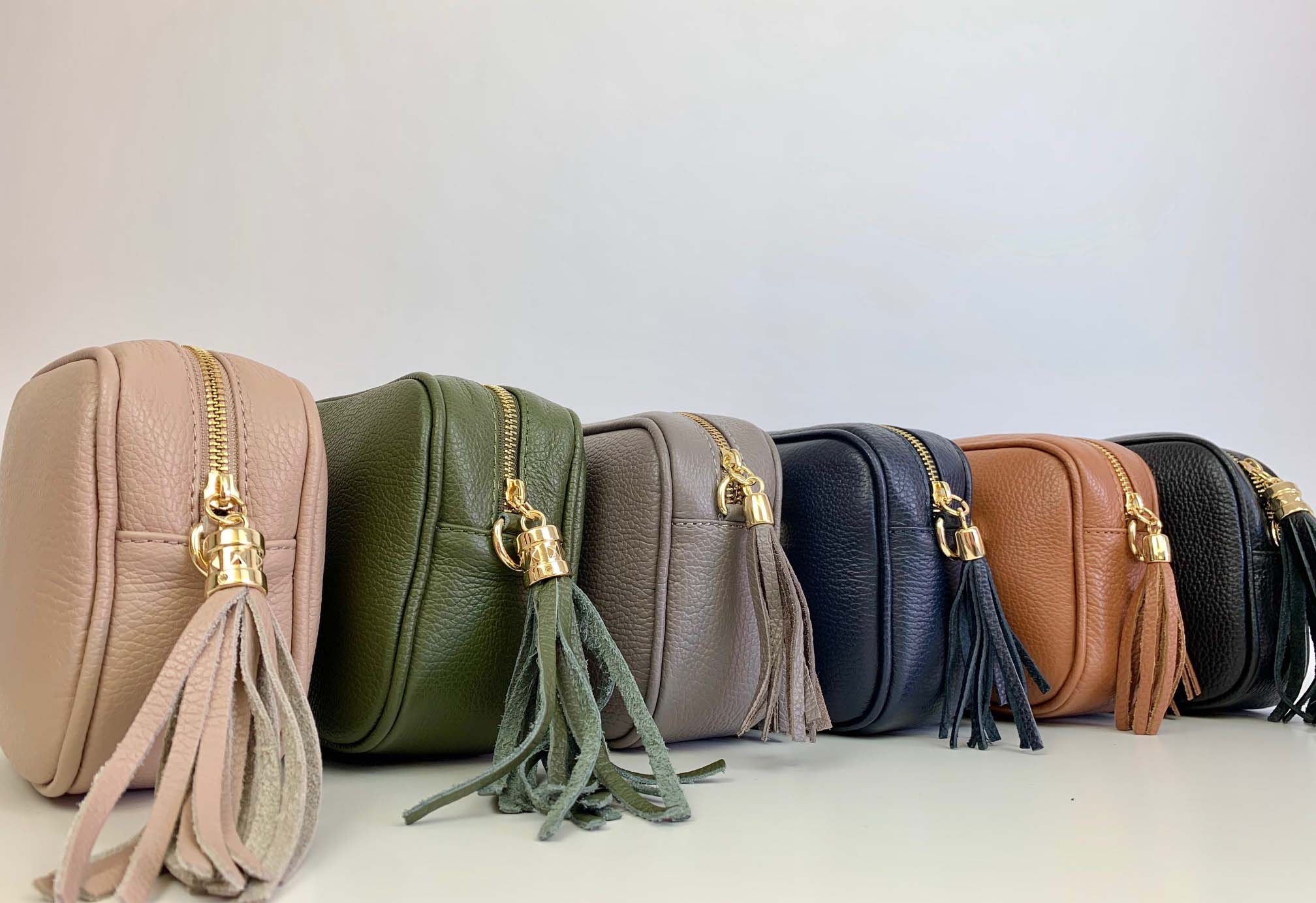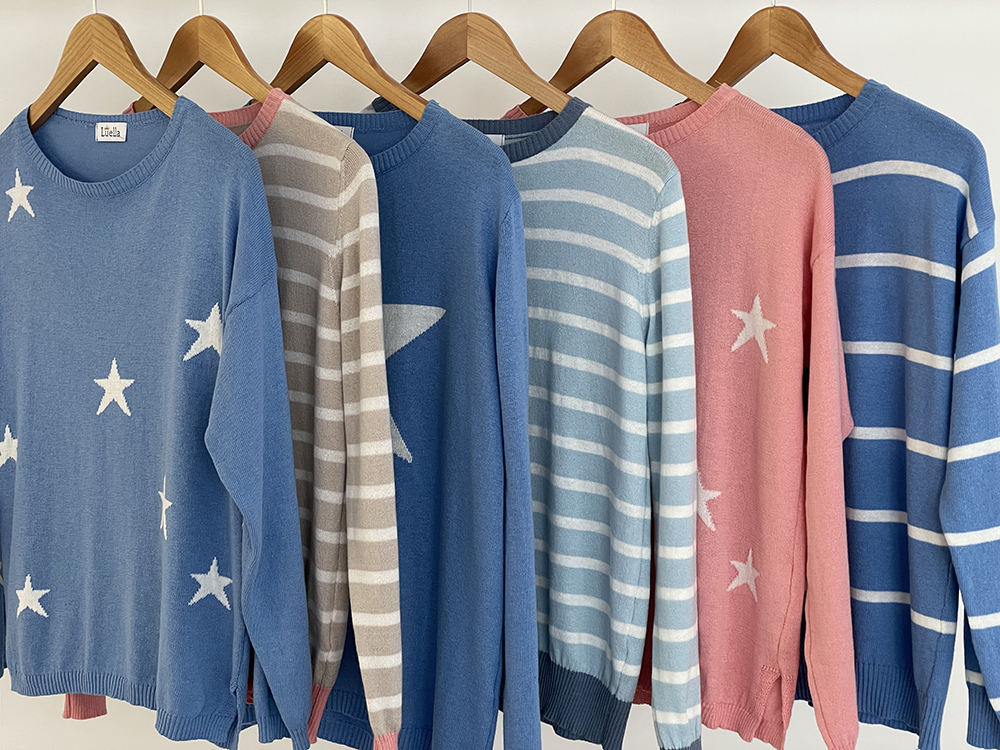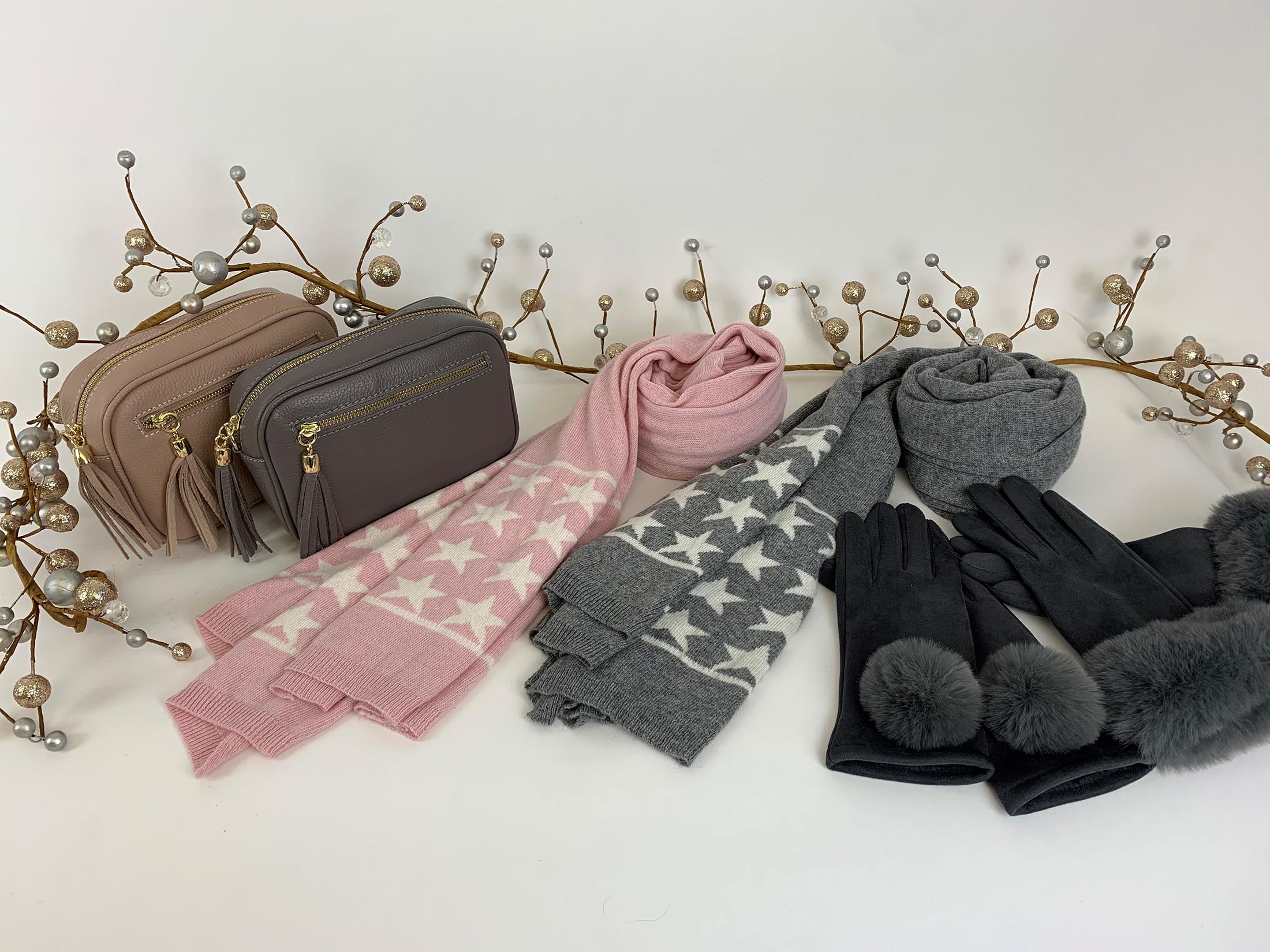 Designed in Great Britain | Made in Italy
Designed in Great Britain | Made in Italy
 sales@luellafashion.co.uk
sales@luellafashion.co.uk
 + 44 (0) 1454 238940
+ 44 (0) 1454 238940
 Designed in Great Britain | Made in Italy
Designed in Great Britain | Made in Italy
 sales@luellafashion.co.uk
sales@luellafashion.co.uk
 + 44 (0) 1454 238940
+ 44 (0) 1454 238940
There are dozens of natural and man-made fabrics that clothing is made of nowadays. Some can trace their history back millennia, and others have been developed in laboratories in our own lifetimes to meet specific technical needs.
In this piece, we’re going to focus on two of the former types – fabrics that are as old as the mountains, and in one case, that’s exactly where it originates.
We’re talking about cashmere and cotton – two options for anyone seeking warm, comfortable and stylish clothing – and looking at how they are different. If you’re weighing up items made from these two fabrics, this guide is for you.

Cashmere is a very high-quality wool, possibly the highest quality in the world. It has been prized for hundreds of years for its softness and warmth and was particularly valued in Victorian times in Europe, with the queen herself being one of its admirers. Fortunately for said queen, Kashmir, now an area under the control of India, Pakistan and China, was under British rule, so there was a ready supply of the wool.
What we know as cashmere wool evolved over millions of years on the goats native to the region. It’s mountainous and has incredibly cold winters, so it’s no surprise that Mother Nature gave this wool superior insulating properties.
But when you look at a cashmere goat, you’re not looking at the cashmere wool that’s used for clothing. The outer layer is pretty standard goat hair, and it is rather coarse, better suited to mats and stiffening components of clothes. The prized wool is an underlayer, designed to keep the animal warm. To add to its rarity, it’s mainly found on the underside, especially around the neck, and it’s seasonal, being shed in the spring. It’s better to think of it more as a down than a traditional wool.
The wool is collected and spun into lengths, and can then be knit into the clothes we love.

Cotton is also natural, but it comes from a plant rather than an animal. It’s actually a protective layer (known as a boll) for the seed of the cotton plant, again the result of millions of years of evolution.
Various species seem to have been used around the world for many thousands of years, which suggests its use has been developed independently several times by cultures without contact. That tells you all you need to know about how good a product it is – once used it was never forgotten.
The bolls are picked, separated from the plant and the seeds, and then spun. That’s the process of twisting the lengths around each other very tightly. A single staple, or strand of cotton fibre, is usually about 25–30 cm long, but by spinning them together, indefinitely long lengths can be made which are incredibly strong, just like rope. These lengths can then be woven into sheets of cloth for the clothing trade.

So we’ve got two incredible types of thread that go into some lovely clothing, but how do you tell them apart when you’re choosing which to buy? Here are the factors that might help you to make the decision … and there’s less in it than you might think!

If there’s one thing that cashmere wool is known for, it’s the price. There’s no denying that it’s one of the most expensive wools you can buy, so it shouldn't be too surprising to learn that jumpers, scarves and cardigans made of cashmere will also be a little more expensive than traditional wool. It’s partly down to the absolute sumptuousness of the fabric, but also because it’s quite rare.
However, there are some excellent compromise solutions available. For example, it can be blended with other wools, so it’s less expensive to produce, but still has supreme softness and warmth. At Luella, we blend cashmere with Merino, another luxuriously soft wool, and a small amount of polyamide to help keep shape and elasticity. Another option is to use pure cashmere in certain parts of the garment, typically where it touches the skin, and other wools elsewhere.
Cotton, on the other hand, is easy to mass-produce – indeed it was the spark for the Industrial Revolution. That’s why it’s possible to produce cotton clothing more economically. However, that’s not to say there isn’t a huge range of quality when it comes to cotton clothing. Look for higher thread counts and Egyptian cotton, as these are markers of better quality cotton fabrics, although as you’d expect, the price will be a little higher.

Cashmere’s role in nature is to provide warmth against the harsh climate, so naturally, it’s going to have incredible insulating properties. You know you’re wearing cashmere and not a lesser wool because you’ll be warm and yet you won’t feel clammy and overheated. That’s because it also has superb breathability, letting moisture out while trapping warmth.
Cotton’s natural purpose is to protect against predators, so warmth isn’t an inherent quality. However, a good weave of cotton fabric will help trap air between layers, so if you wear cotton as an underlayer, or wear a few layers of cotton fabric, for example, a T-shirt under a cotton knit sweater, you’ll be warm and fresh enough.

There isn’t much in it when you compare the softness of a good quality cashmere with a well-made cotton garment. Both will feel great against your skin – it’s no accident that bedsheets are made of cotton. Cashmere’s famed softness is more of a reference to how it compares with other wools rather than other fabrics in general. While many wools can be scratchy and itchy, that just isn’t the case with downy cashmere, thanks to its unique fibre structure at the microscopic level.
If you want woollen clothing to wear against the skin, cashmere is your natural choice. However, for underlayers or soft single-layer clothing, cotton will be just as comfortable.

Clearly, with cashmere coming from a goat, it will not be suitable for anyone who refuses to eat or wear animal products for ethical reasons. It’s worth noting that the best quality cashmere wool comes from the natural seasonal shedding of the lower layer of wool as winter turns to summer. As with any animal products, animal welfare should be top of the priority list for an ethical shopper, as should the carbon footprint of transportation and preparation of the fabric and yarn.
Any product, be it animal or plant originated, can be made with low or high ethical standards, so it’s up to the consumer to shop around to ensure they are buying their fashion products from manufacturers and suppliers who take such matters seriously. Read about our journey to sustainability for more information, and to reassure you that Luella is a company that’s working hard to minimise our impact on the planet.

Both cashmere and cotton are naturally tough, thanks to the structure of their fibres. When well-spun and woven or knitted into quality clothing, you shouldn’t have any problems with fraying or wearing out with either fabric. The biggest risks come from buying clothing that’s made cheaply, where corners will be cut, or from washing the clothes in the wrong way. Cashmere in particular is prone to shrinkage and damage if it’s thrown in the wash with all your other clothes – that’s why we recommend a methodical way to clean and dry your cashmere clothes. Take a look at our care guide here.

Cashmere lends itself to clothing that’s traditionally associated with knitwear – jumpers, shawls, scarves, hats, gloves and so on. It is a warm fabric, and although it can be worn throughout the seasons because of its breathability, it will never be a substitute for extremely fine knit or woven fabrics, like those used in underwear and underlayers. However if you’re looking for a sumptuously soft piece of knitwear, a good quality cashmere or cashmere blend should be top of your list.
Cotton, on the other hand, is much more versatile. It can be spun into heavy or extremely fine thread, and then woven or knit into the complete range of textures and patterns, from sheets and napkins to delicate vest tops and chunky knit sweaters. Denim, jersey, poplin, canvas, flannel, rib knit, muslin, towelling … the list goes on – all very different fabrics, all made from cotton.
Hopefully, this article has cleared up any questions you may have if you’re choosing between cotton and cashmere. Of course, every wardrobe should have both in abundance, because they’re quite different and are worn in different ways. But if you’re looking for a specific item, there are always very good reasons to choose one over the other. Now, why not check out our new range?